Now that’s entertainment: licensing records for Worcestershire and beyond – Part One
- 21st November 2024
Here, we explore how licensing files can assist research into how pubs, theatres and other entertainment venues in Worcestershire may have undergone changes through time. Like house history, you can understand the history of buildings and the people who lived or worked there by combining this with other documentary or archaeological evidence. We have done just that for the The Fleece Inn, Bretforton – read on to discover the fascinating history of this well loved pub.
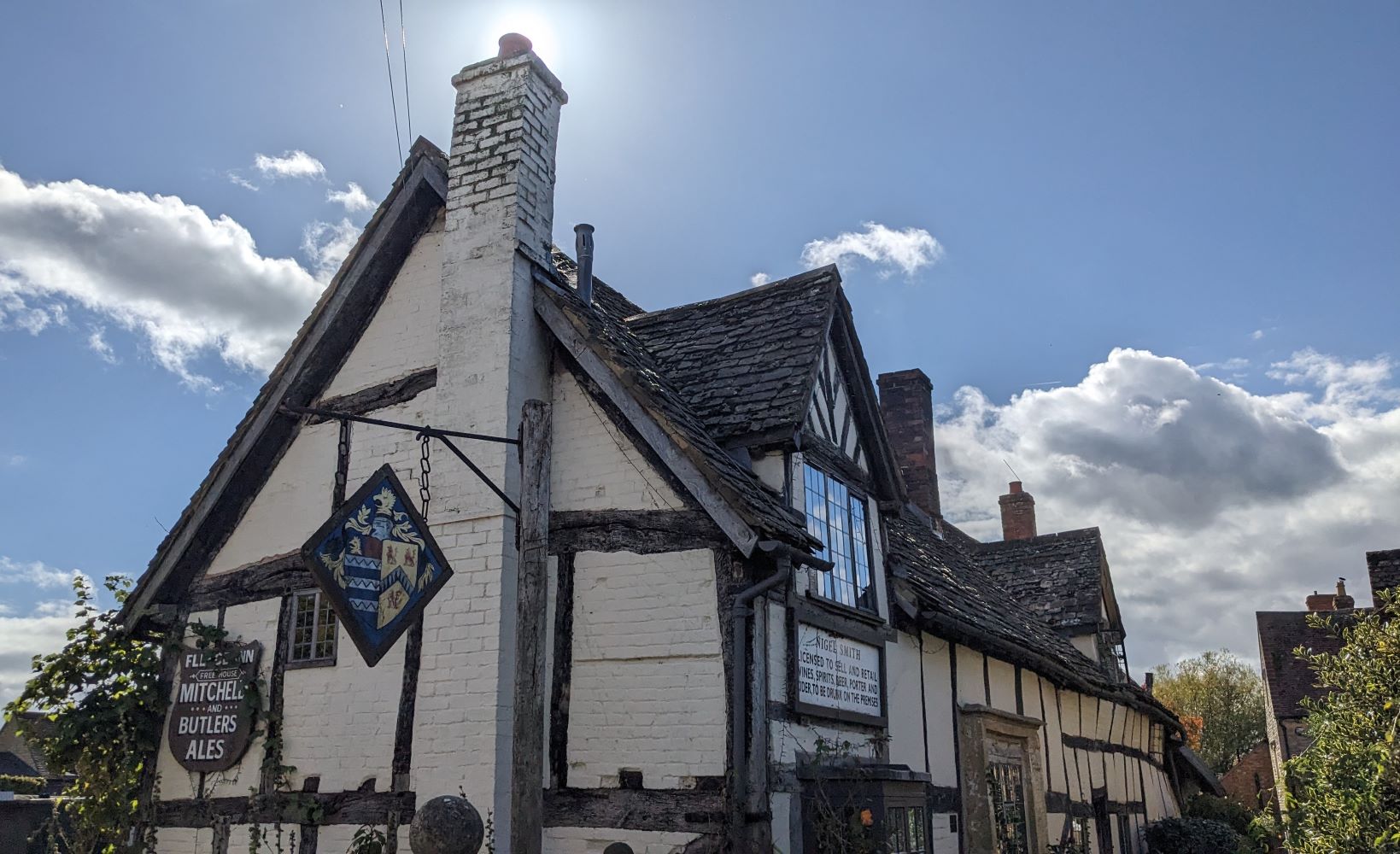
The Fleece Inn, Bretforton, Present Day © Anthony Roach
Licensing files are one of the latest sets of public records catalogued as part of the New Burdens project. They can contain application plans for proposed building alterations to a pub or other entertainment settings, as well as inspections and correspondence. Records for The Fleece Inn, Bretforton contain an inspection of the licensed premises, along with some plans, the owners of which are listed as The National Trust.
Licensing files include application plans, inspections and correspondence from the Betting and Gaming Licensing Committee. Premises licenses for public houses and entertainment venues across Worcestershire, considered by the local licensing committees, are also included. These now form part of the Licensing Act 2003. The Licensing Act is to ‘make provision about the regulation of the sale and supply of alcohol, the provision of entertainment and the provision of late-night refreshment, about offences relating to alcohol and for connected purposes’.
Worcestershire Regulatory Services (WRS) ‘administers licensing functions on behalf of all six licensing authorities in Worcestershire’ and includes ‘the administration, regulation and enforcement of licensing laws’ with ‘any matters outside of the powers delegated to WRS are referred back to the Local Authority for decisions or actions by their elected members i.e. Licensing Committees’. Further information on the types of alcohol licences can be found here. Following an application that is put forward, at a hearing, the licensing authority may:
- grant the application subject to modifying conditions
- reject one or more requested licensable activities
- reject the application
- refuse to specify a person as a designated premises supervisor
All decisions of the licensing authority, and any conditions imposed, must be appropriate for the promotion of the licensing objectives. If a person disagrees with the council’s decision, they have the right of appeal to the magistrate’s court.
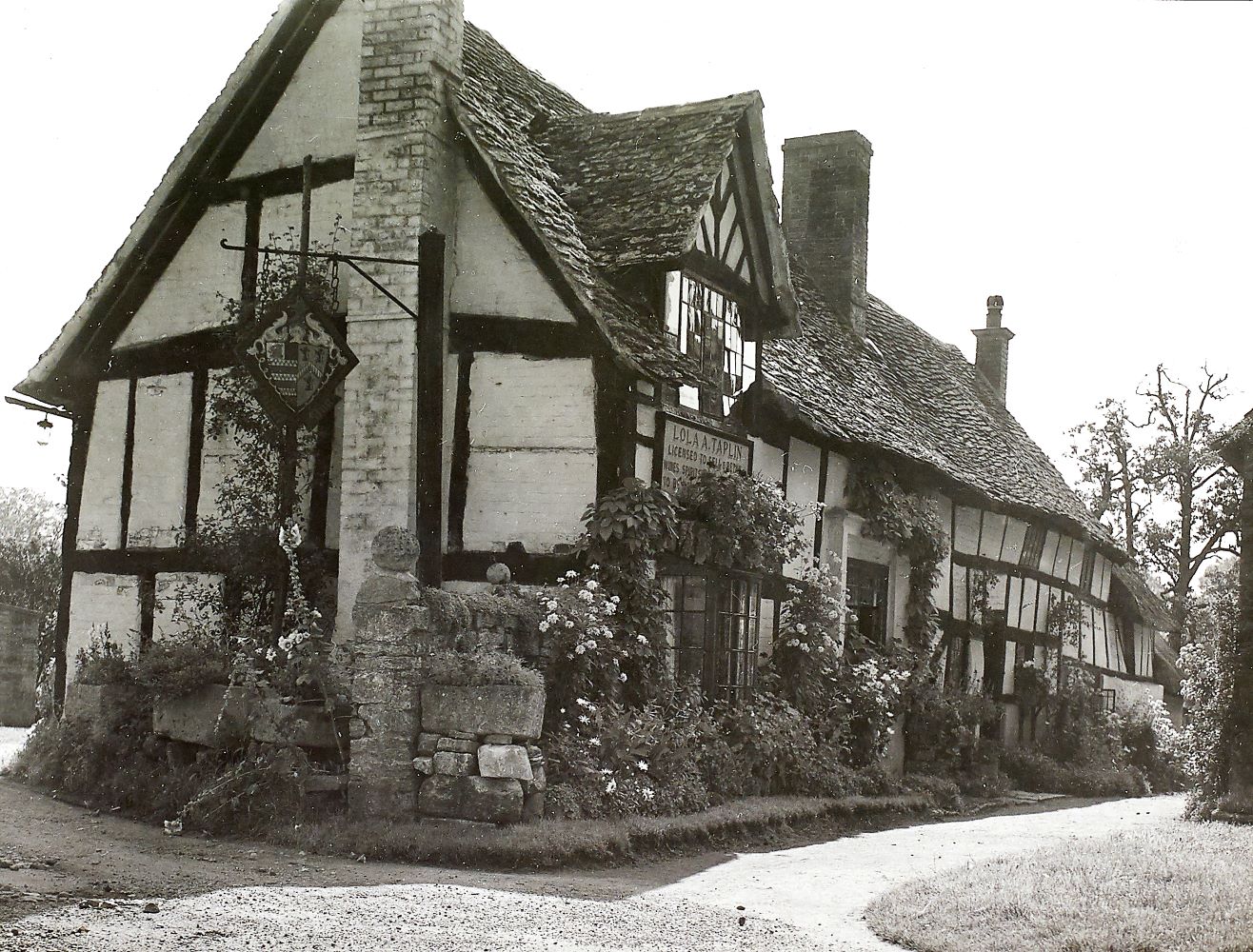
Fleece Inn, Bretforton Finding No 899:156 1332 Worcestershire Photographic Survey (WPS) 8727 c.1954 © F. G. Ashmore
Drawing on local history materials found in our local studies reference collection, an illustrated guide to Bretforton Village (at Ref L942.449) has an excellent summary about The Fleece Inn, explaining that the former 15th century farmhouse and its contents were donated to The National Trust by their last owner, Miss Lola Almeda Taplin (1894-1977) to ensure its preservation.
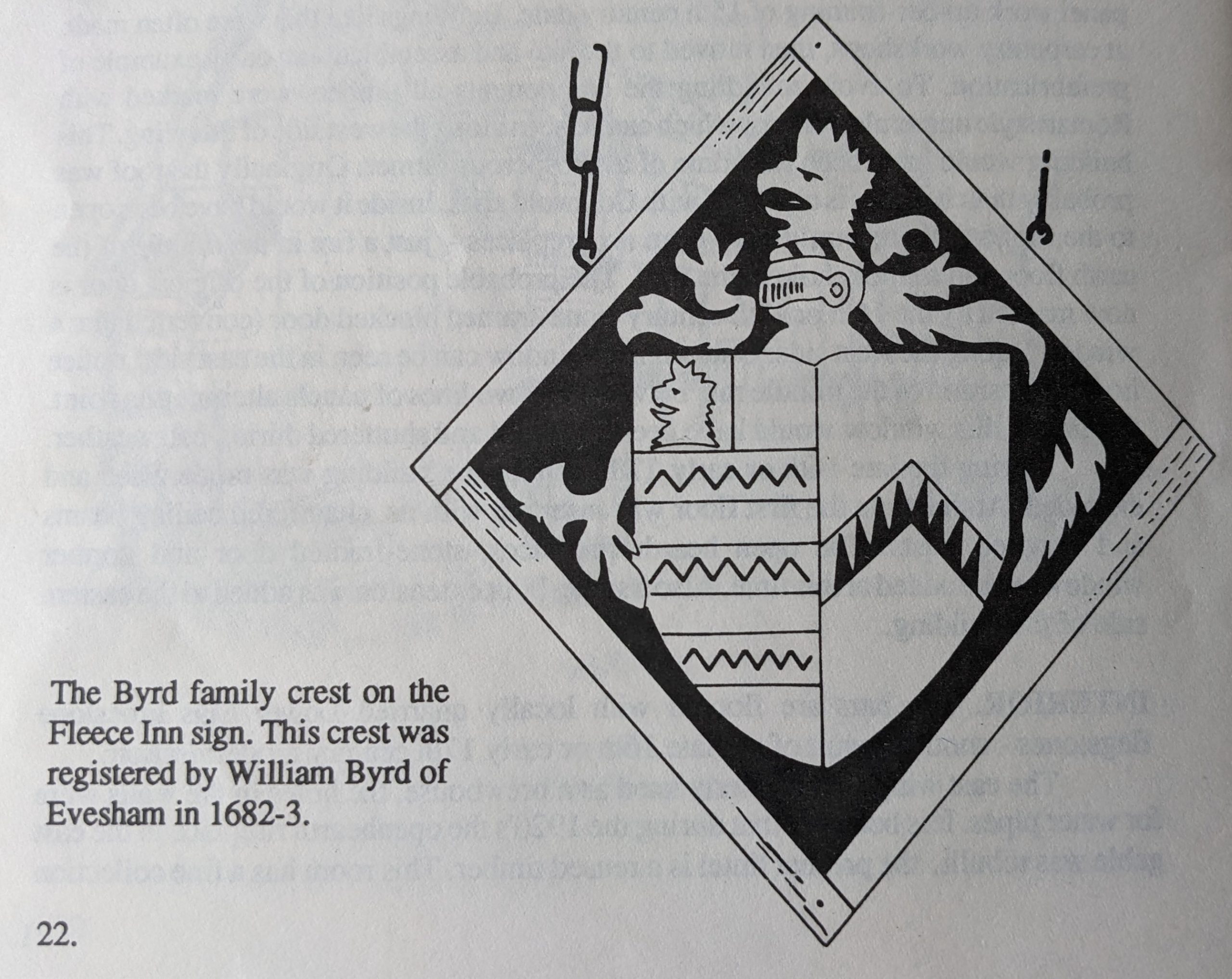
The Byrd family crest on the Fleece Inn sign depicted in Bretforton Village, History of the Church…An Illustrated Guide, by Bruce Watson. B.A., M.Phil., A.I.F.A. at Ref: L942.449 p.22
According to Bruce Watson in his illustrated guide, the farmhouse was occupied by a Henry Byrd, a farmer who obtained a licence to make and sell beer and cider. The family became “beer retailers” with The Fleece acting as a brewery and an off-licence, before it became a pub sometime between 1909 and 1912. Brewing ceasing in the early 1920’s, but the Byrd family crest still appears on the pub sign of the Fleece.
Licenses for the selling of Beer, Ale, Porter and later Cider and Perry for Henry Byrd 1849-1851. Finding No: 705:353 BA8613/3(iii)
For many public houses, their original license for brewing and/or the selling of beer, ale, porter, cider and perry can survive. These are known as Victuallers’ Licences and are issued annually.Whilst the licence was for the building itself (leading to the phrase “licensed premises”), they do list the licensee and the type of license the premises holds. Victuallers’ Licenses can be found in Quarter Sessions and Petty Sessions records. Also held within our Quarter Sessions papers are licenses of alehouses, theatres, dissenter’s meeting places etc.
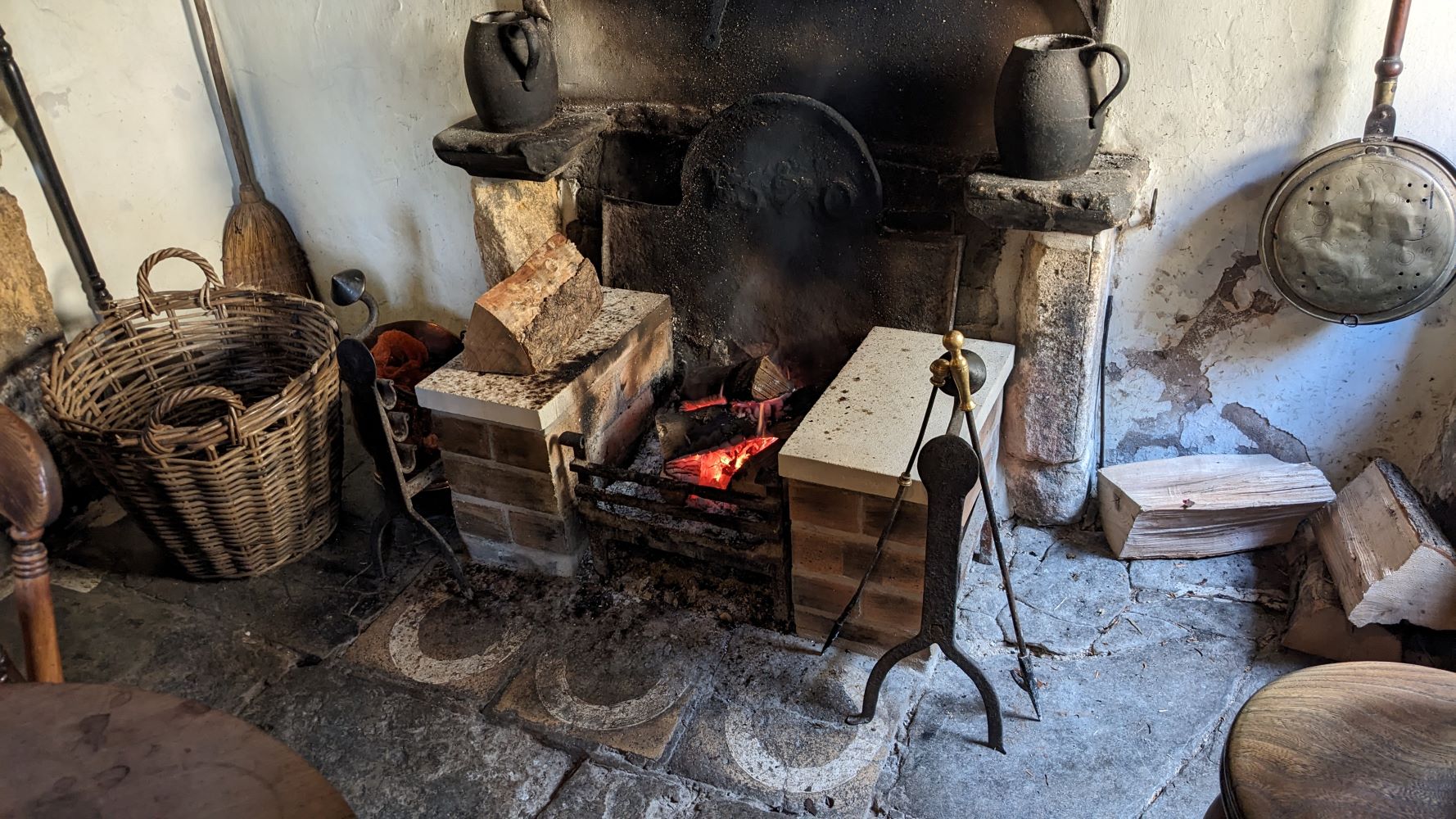
Witches marks painted in the fireplace of the Fleece Inn, Bretforton, Present Day © Anthony Roach
Watson in his Bretforton guide also refers to witch markings in the hearth floor of the Fleece (two circles and a rectangle) which were once chalked but now painted. These are of 17th century origin when “good” magic was used to protect the house from Witchcraft or “bad” magic. Using resources familiar to family historians, we can track those who owned The Fleece over time using successive census’.

Henry Byrd, listed on the 1851 Census – available on Ancestry.co.uk © Crown Copyright
A search for Henry Byrd on Ancestry reveals him first as a Farmer on the 1841 Census. Henry is then mentioned as a Beer House Keeper on the 1851 Census, with his wife Anne and their two daughters Martha, Anne and Henry and Thomas. As we move forward 10 years to the 1861 Census, Henry has died and Anne is listed as the Head and as the Inn Keeper and widow, with her Niece Martha shown as a visitor.

Lola Almeda Taplin, listed on the 1901 Census – available on Ancestry.co.uk © Crown Copyright
Moving forward to the 1901 Census shown above, we can now see a visible link between the last owner of the Fleece Inn at Bretforton, Lola Almeda Taplin and the Byrd family. Ann Byrd, now listed by her Maiden name of Ann Phipps is shown as the head of the family with her daughter Ann and her husband Alfred W. Taplin (Ann’s son-in-law). Alfred’s occupation is given as a Timber Merchant and Lola Almeda Taplin is listed as their granddaughter, aged 7 years old. Also, the pub is given the name of Fleece Inn for the first time on the 1901 Census.
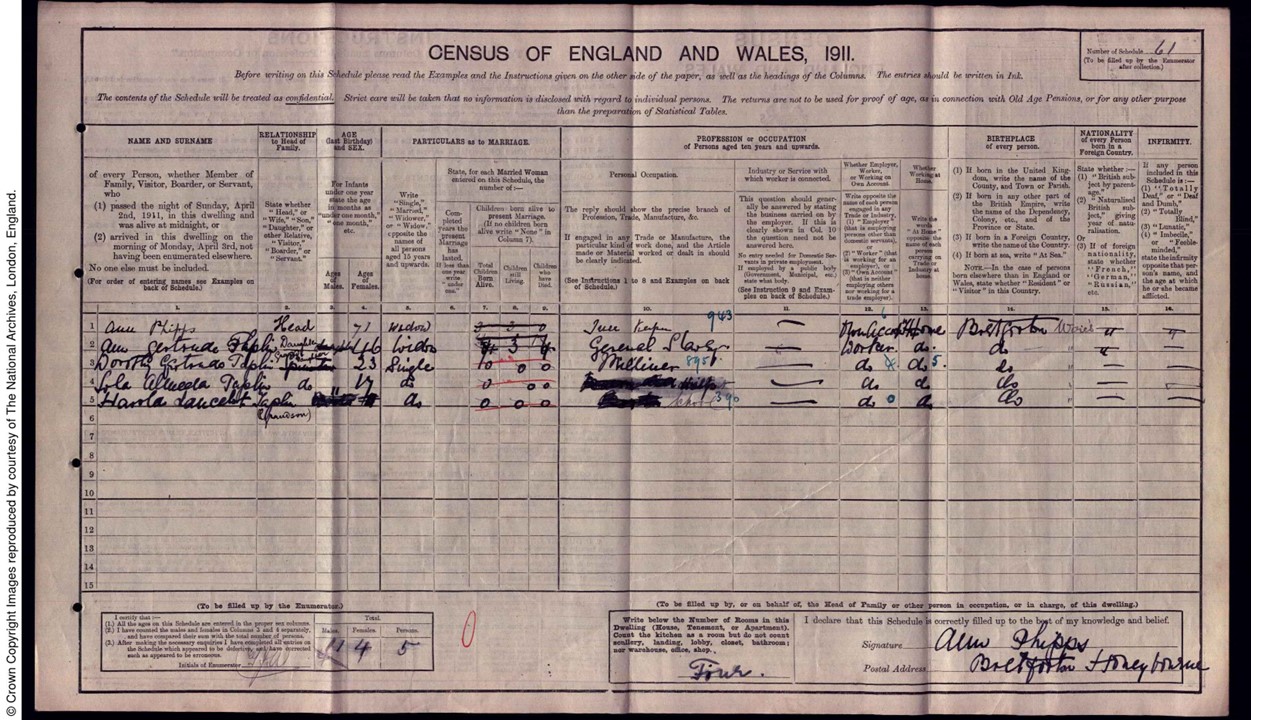
Ann Phipps and her family on the 1911 Census – available on Ancestry.co.uk © Crown Copyright
As we move to the 1911 Census, Ann is now 71 and shown with daughter Ann Gertrude Taplin (also widowed) and granddaughters Dorothy Taplin (whose occupation is Milliner), Lola Almeda Taplin and the youngest grandson Harold Lancelot Taplin. We can use other records such as the GRO Index and electoral registers to trace family history further, but using these sources alone, we can see the links of ownership of the Fleece Inn between the Byrd and Taplin families.
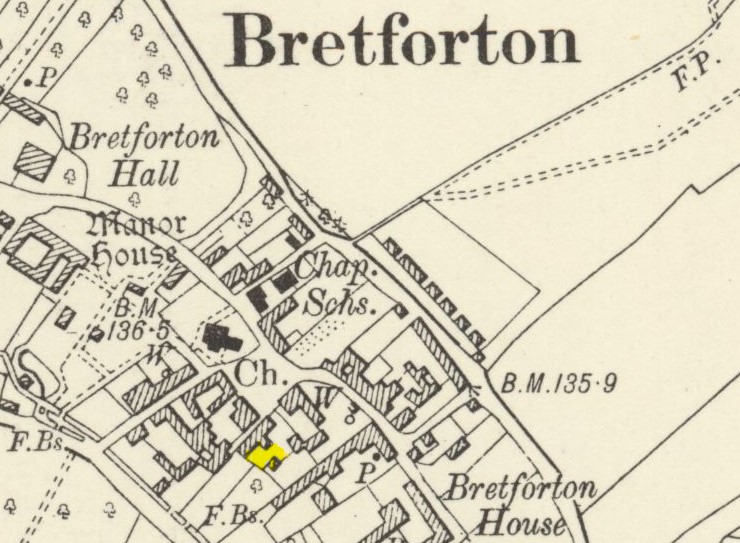
Bretforton, with location of The Fleece Inn highlighted in yellow. O.S. Gloucestershire VII.NW Published: 1905 © Crown Copyright – base map reproduced with the permission of the National Library of Scotland CC-BY (NLS)
Just like houses, maps and plans can be useful to identify a venue’s location and observe changes through time. We may hold a tithe or enclosure plan for the relevant parish, and the accompanying tithe apportionment record can tell you who owned and occupied the property at that time. These date between the 1830s to the 1850s. In the case of Bretforton, we do have the enclosure award but without a plan.
We do hold estate maps and plans, but again, these do not cover the relevant area or period, but we can use Ordnance Survey (O.S.) maps (1880’s to the 1960’s). We hold 1st and 2nd edition O.S. maps for Worcestershire and these are also available via The National Library of Scotland website. Using O.S. Maps it is possible to highlight the location of The Fleece Inn with its name shown on a map in 1971.
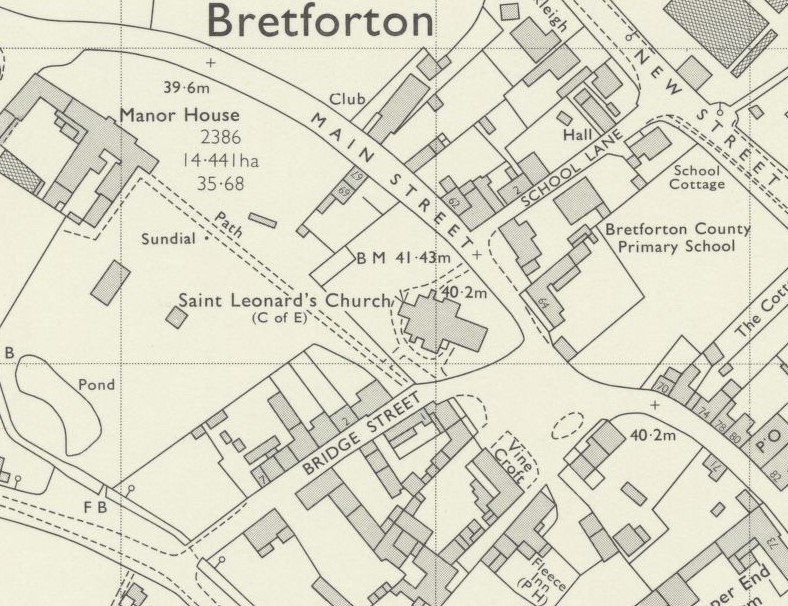
Bretforton, with location of The Fleece Inn shown. SP0843-SP0943 AA. O.S. Map. 1.2500 Published: 1971 © Crown Copyright – reproduced with the permission of the National Library of Scotland CC-BY (NLS)
If a particular building is of a very early date, such as in the case of the Fleece Inn, it may have listed building status and you can undertake a search for its listing by Historic England. The official listing states the Fleece Inn is listed at Grade II for its architectural and historic interest:
‘the building retains a significant proportion of its historic fabric, and its likely origin as a timber-framed farmhouse remain legible, with a cross passage and hall to the north; * the inn retains many historic fittings including inglenook fireplaces, stone floors and chamfered ceiling beams’

Application plan showing North-East and South-East elevations of the Fleece Inn Finding No b599.1 BA15269/3 © The National Trust
The Historic Environment Record (HER) service sits alongside the archive and archaeology services at The Hive. It is the primary database for archaeological and historic environment information in the county and holds approximately 83,000 records of archaeological sites, historic buildings, monuments, and landscape features. The HER can assist with research into both the history of a particular site and what was going on around it.
HER records for the Fleece Inn refer to a survey completed on behalf of the National Trust between November 1989 and February 1990, which summarises the Fleece as a:
Timber frame stone, slate roof Inn, said to be of 14th century origin. Noted a 15th century building that was extended in the 16th century. At this time it was single-storeyed but the 16th century extension was not to the original height. The 16th century extensions were of lower quality. Ceilings were gradually inserted and in the 18th century the 16th century extension was raised to the same original height. A later two-storey extension was of stone.
Almost contemporary with this survey is a Licensed Premises inspection of the Fleece Inn dated 20th April 1989, which states the rooms, bar, cellar and other resources are ‘Very Good’.The licensing files include elevations and section plan for suggested improvements and modernisation dated to March 1978. As explained on the official website of The Fleece Inn, ‘a tragic fire occurred at midday on 27th February 2004, when a spark from a chimney set fire to its thatch and aged timbers and precious antiques were rescued by the locals while fire fighters tackled the blaze’.
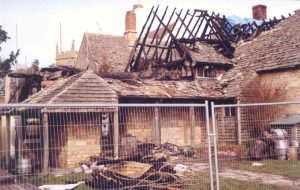
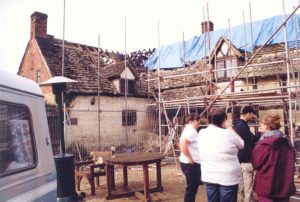
Images showing the devastation of the fire taken from the HER buildings survey post-fire in 2004 (HER, 2004, WSM33550; SWR2354) © WAAS
These images are taken from a buildings survey (HER, 2004, WSM33550) undertaken by the HER post the fire and illustrate the resulting devastation to the property. However, following a renovation programme, the Fleece was restored to its former glory, retaining its integrity and original features, with The Pewter Collection in The Pewter Room having been restored also. Legend has it that the important collection of 17th-century Jacobean English pewter was left by Oliver Cromwell on his way to the Battle of Worcester in exchange for gold to pay his troops. The Fleece Inn is just one example of how sources to explore House, Local and Family history can be used together to reveal the amazing history of Worcestershire buildings and the people who lived and worked in them.
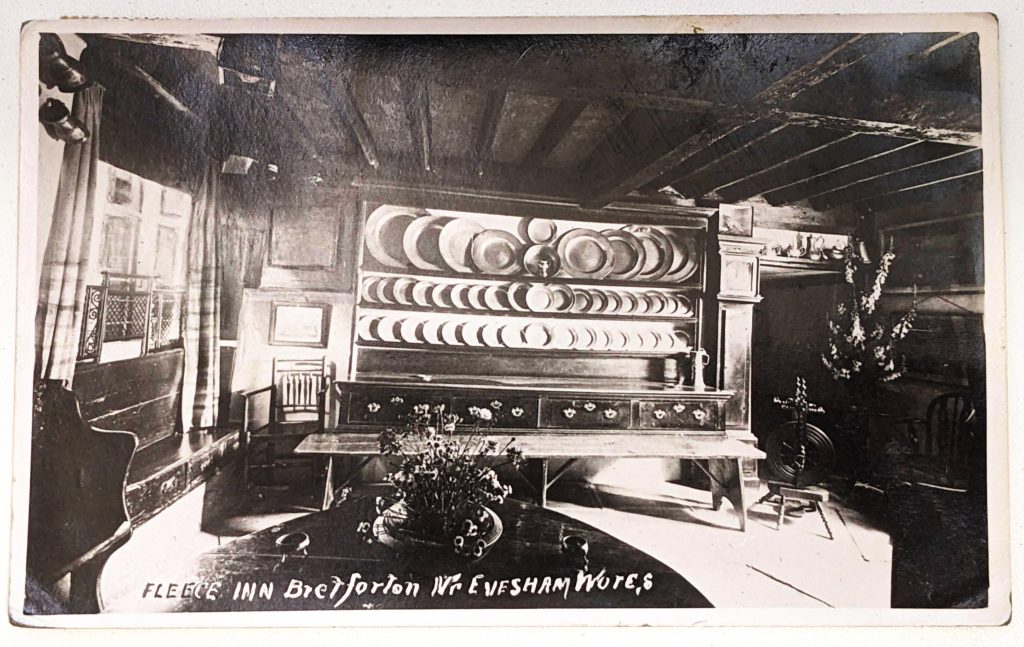
The Pewter Room, Fleece Inn, Bretforton at Finding No 705.353 BA81633(i) c. early 20th century © Unknown
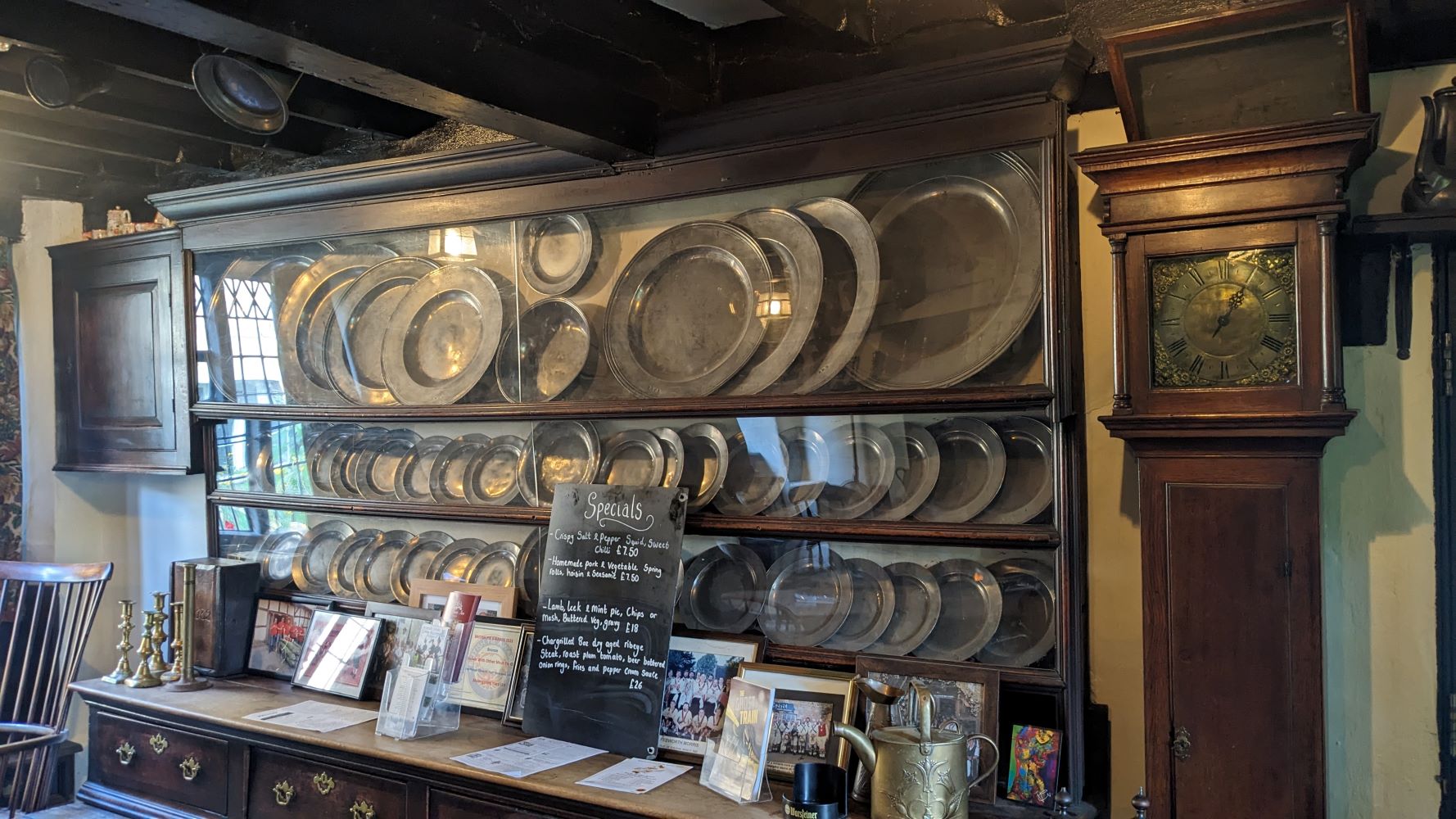
The Pewter Room, Fleece Inn, Present Day © Anthony Roach
Please note all efforts have been taken to identify copyright owners, we apologise for any inadvertent infringement and invite the copyright owners to make contact where necessary.
Sources used:
HER WSM33661 – Survey Between 1989 and 1990 of The Fleece Inn, Bretforton
HER WSM33550 – Photographic Survey taken in 2004 of the Fleece Inn, Bretforton
Licensing Act 2003 details on Gov.uk
Worcestershire Regulatory Services website
Areas covered by Worcestershire Regulatory Services
Details of alcohol licence types on Gov.uk
Watson, Bruce B.A., M.Phil., A.I.F.A. Bretforton Village, History of the Church, Houses and Silver Band, An Illustrated Guide. Hive library shelf reference: L942.449
National Library of Scotland website
Database of the National Heritage List for England, held by Historic England
Listed buildings record for the Fleece Inn, held by Historic England
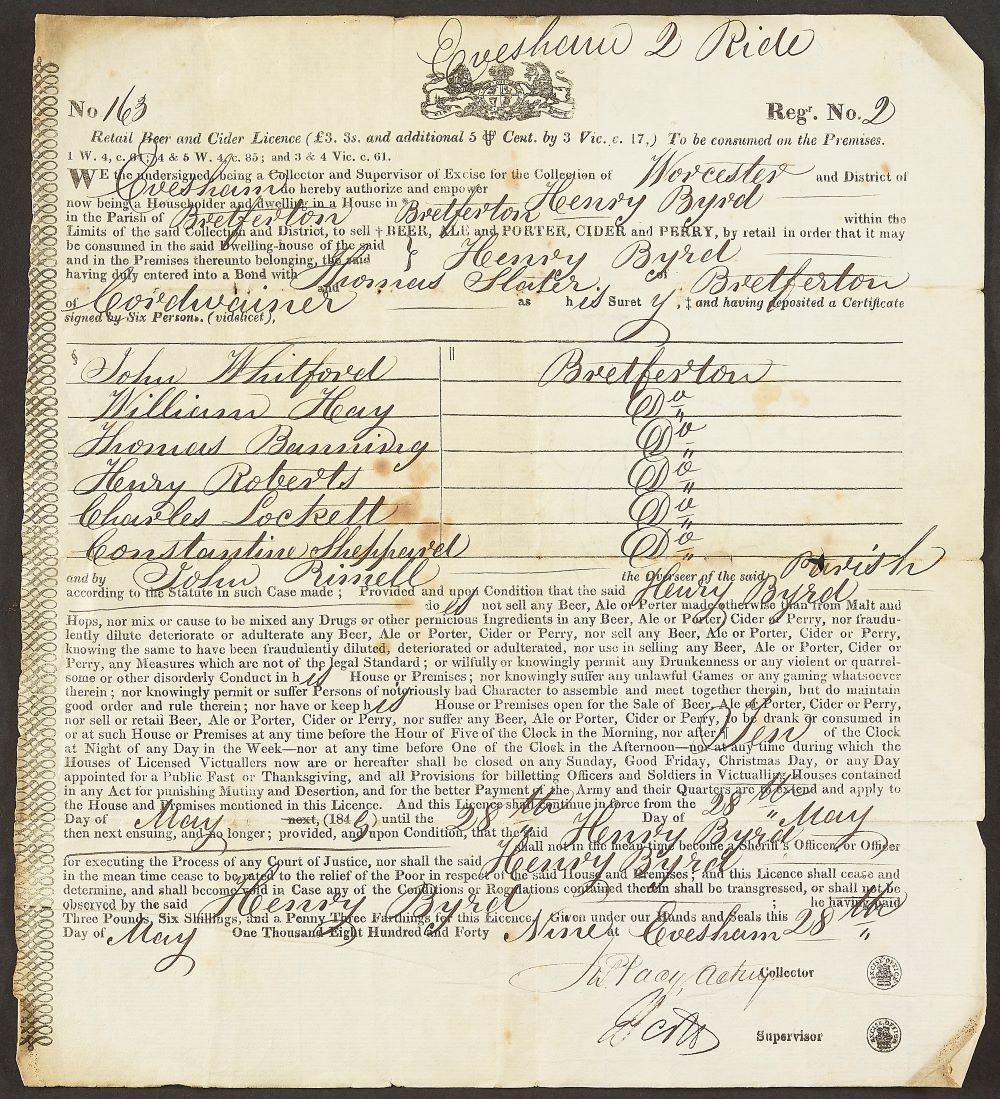
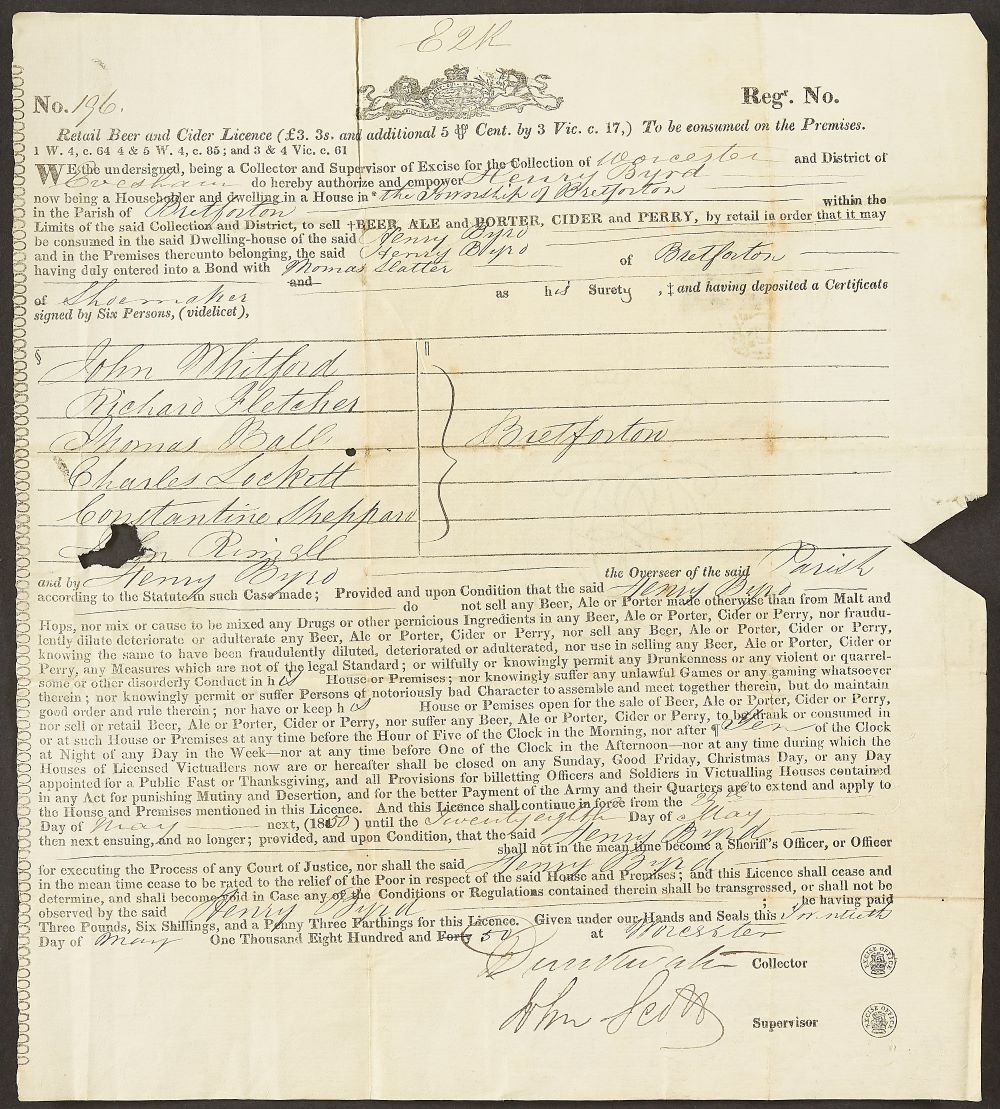
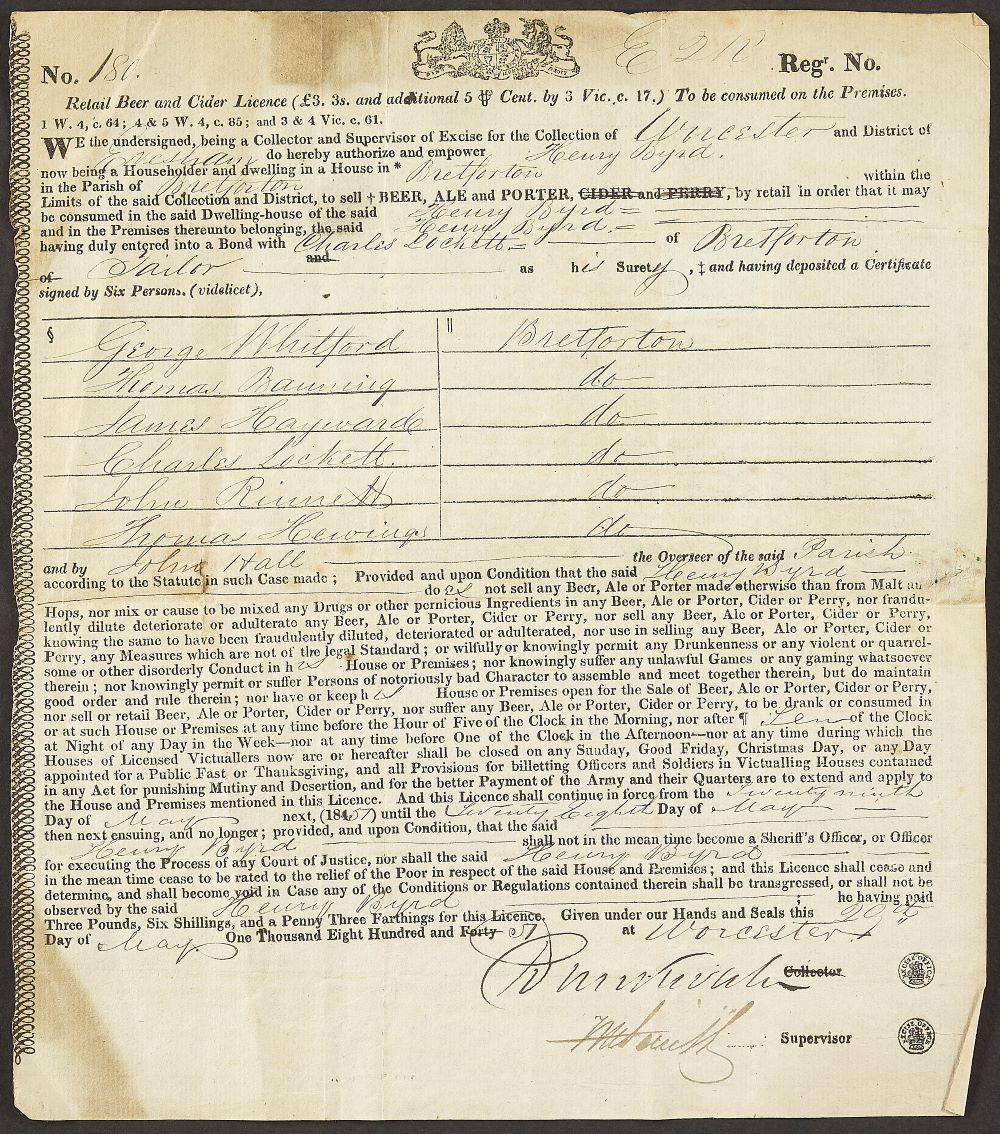
Post a Comment